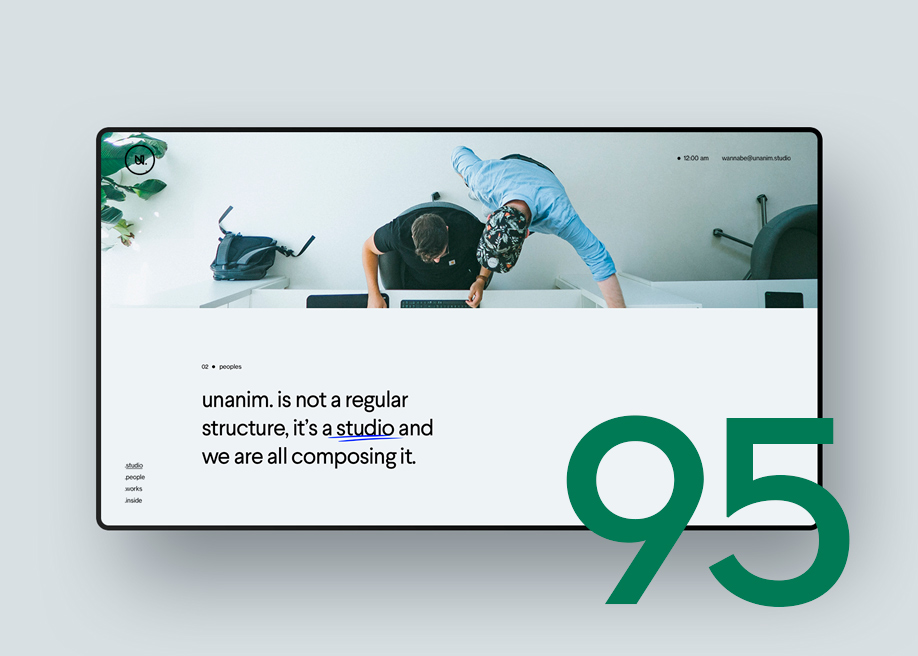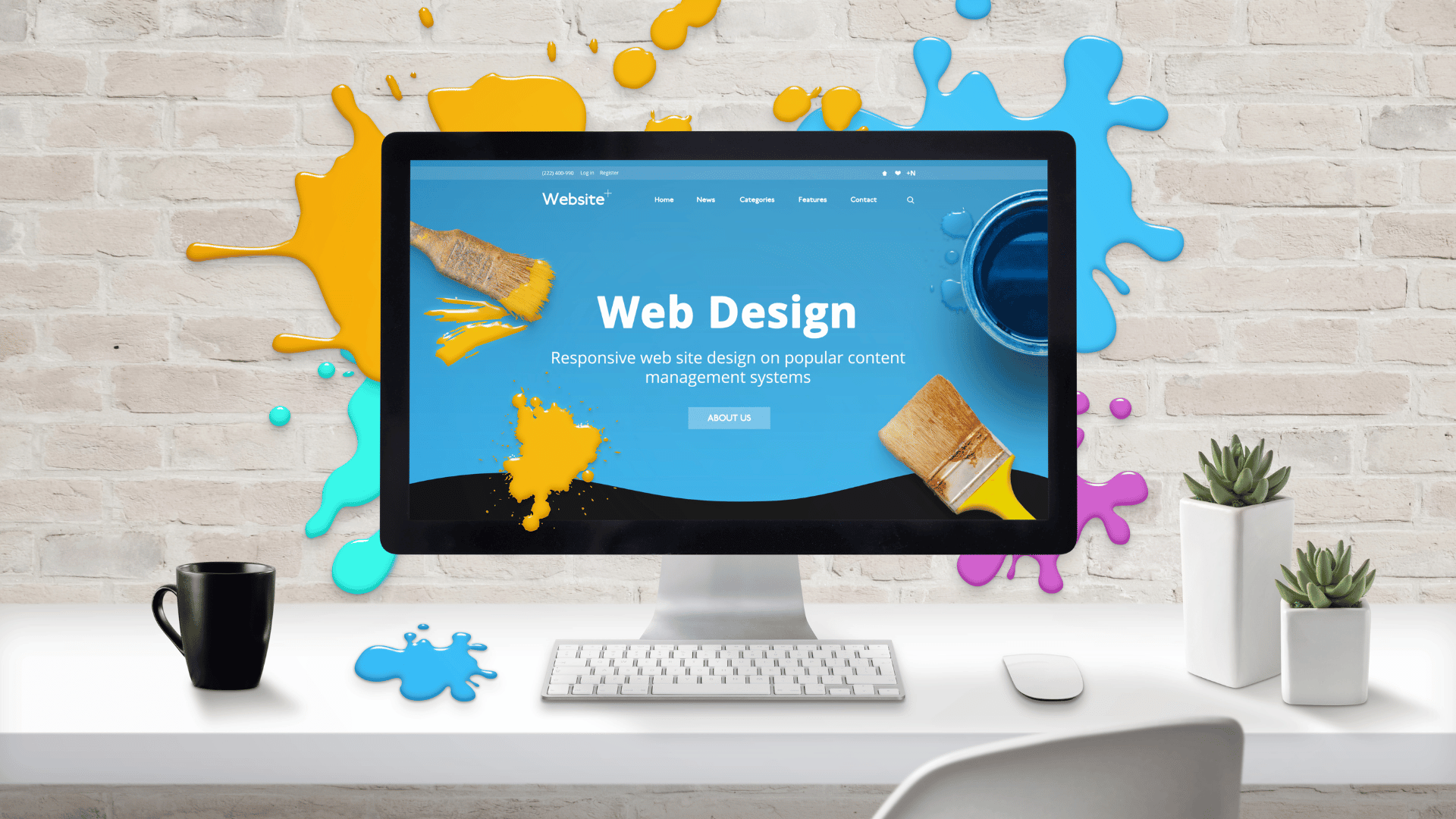Website Design London Ontario for Fast, Safe, and Flexible Sites
Website Design London Ontario for Fast, Safe, and Flexible Sites
Blog Article
Crucial Tips for Creating Stunning Website Design That Captivates Site Visitors
You're not simply producing a website; you're crafting an experience for your visitors when it comes to web layout. It is necessary to recognize that your audience is and what they desire. By concentrating on individual experience and ensuring your design is both receptive and visually attractive, you can make a considerable impact. But there are much more aspects to ponder that can boost your layout even better. Let's explore those essential tips.
Understand Your Target Target Market
Exactly how well do you really know your target audience? Understanding who your site visitors are is important for reliable website design. Start by identifying their demographics, passions, and discomfort points. Ask on your own what troubles your web site can solve for them. Usage surveys, analytics, and social networks understandings to gather useful data.Once you have actually got a clear image of your audience, tailor your layout components to reverberate with them. Select shades, fonts, and visuals that interest their preferences. If your audience skews younger, take into consideration contemporary, vivid appearances. For a specialist group, a smooth, minimalist strategy could function much better.
Focus On User Experience
While you may have a stunning layout, it will not matter if your users can't navigate your website easily. Prioritizing customer experience is essential for keeping site visitors engaged. Beginning by assuring your website's layout is user-friendly. Usage clear headings, logical menus, and regular navigation elements. This means, customers can locate what they need without frustration.Next, emphasis on lots times. A sluggish site can drive users away, so optimize photos and decrease unnecessary manuscripts. Make sure your material is legible also-- choose clear font styles and keep a great contrast between text and background.Don' t ignore availability. Ensure that your layout suits all users, including those with specials needs. Usage alt texts for images and give key-board navigation options.Finally, test your site with real users. Collect feedback, identify discomfort points, and make modifications. By focusing on user experience, you'll create an internet site that captivates and retains site visitors.
Use Responsive Style
When making your web site, you can not overlook the value of responsive style. By developing mobile-friendly designs, executing fluid grid systems, and making use of media inquiries, you'll assure your website looks great on any gadget. This approach not just enhances user experience however also enhances your website's access.
Mobile-Friendly Layouts
Have you ever before tried navigating a website on your phone just to be discouraged by little text and confined layouts? You're not alone, which's why mobile-friendly formats are crucial. To keep your visitors engaged, ensure your web site adapts effortlessly to various screen sizes. Use versatile photos and scalable typography so material appearances great on any tool. Focus on touch-friendly buttons and navigating to make surfing intuitive and simple. Remember, a tidy, basic layout can boost user experience and encourage longer brows through. Test your design on different tools to recognize any problems. By developing a mobile-friendly layout, you'll not just enhance ease of access but also boost site visitor fulfillment, inevitably boosting your site's success. Do not forget this crucial facet of contemporary internet style!
Liquid Grid Equipments
Developing a mobile-friendly format sets the phase for executing fluid grid systems in your website design. Fluid grids allow your format to adapt seamlessly to numerous display sizes, assuring a constant experience for all customers. Rather than fixed pixel dimensions, use loved one devices like portions to specify your layout aspects. This method assures that your design stays proportional, no issue the device.When utilizing liquid grid systems, prioritize crucial content positioning and readability. Break your design right into columns that can stack or reposition based on the screen width. Bear in mind, the goal is to produce an aesthetically attractive interface that preserves performance across devices. By accepting fluid grids, you'll boost customer engagement and keep visitors captivated on any type of screen.
Media Queries Use
Media inquiries are necessary tools in responsive web design, permitting your website to adjust to different devices and display sizes. By utilizing media queries, you can use details CSS regulations based on device qualities like size, elevation, and resolution. This implies your web site can look excellent on cellphones, tablet computers, and desktop computers without jeopardizing high quality or usability.Start by defining breakpoints in your CSS that target different screen sizes. As an example, you could change font dimensions or layout frameworks for smaller displays. Constantly evaluate your style throughout numerous tools to guarantee perfect watching experiences. Keep in mind, a responsive style not just improves customer interaction however also enhances your website's search engine position. Accept media questions and view your web design radiate!
Pick the Right Color Palette
Selecting the appropriate shade palette can make or break your web design. Shades stimulate feelings and set the tone for your site, so it's crucial to select wisely. Begin by comprehending your brand name identification. If you intend to communicate count on, think about blues; for excitement, opt for vivid reds or yellows.Next, restrict your combination to three to 5 colors. Way too many tones can overwhelm visitors and take away from your message. Use tools like Adobe Color or Coolors to help you find unified combinations.Don' t forget comparison; it improves readability and overviews customers via your material. Make particular your message stands out versus the background.Finally, consider ease of access. Use shade mixes that get along for color-blind customers and make sure your site remains useful for everyone. By choosing the ideal colors, you'll develop a welcoming ambience that maintains visitors involved and motivates them to check out.

Integrate Visual Pecking Order
To create an effective internet style, you need to integrate visual power structure. Start by specifying crucial elements plainly, utilizing size and shade to attract interest where it matters most. Regular designs will assist assist your site visitors, making it simpler for great site them to navigate your material.
Specify Crucial Element Clearly
Visual hierarchy is crucial in find more website design, leading customers via your web content effortlessly. To specify essential components plainly, prioritize what's crucial. Usage headings and subheadings to produce a sensible framework, making it simple for visitors to scan your website. Ascertain that your main message sticks out, attracting focus without overwhelming the customer. Separate text with bullet factors or checklists to highlight significant info, making it digestible. Consistency in font selections and spacing additionally plays an important function in offering your web content plainly. Furthermore, include whitespace properly to give components space to breathe, assisting users concentrate on each section. By defining crucial elements plainly, you enhance the total customer experience and keep visitors involved.
Usage Size and Color
Defining crucial elements plainly establishes the phase for using size and color effectively. Initially, choose a shade scheme that mirrors your brand name identity and evokes the right feelings. Use contrasting shades to accentuate vital components like phone call to action. Next, take advantage of size to develop an aesthetic pecking order; larger components naturally attract more focus. web design london ontario. Headings must be popular and bold, while sustaining text can be smaller sized and subtler. This mix guides site visitors' eyes via your material, making navigation user-friendly. Remember, balance is important-- too several shades or oversized aspects can overwhelm your audience. By attentively using dimension and shade, you'll boost user experience and keep site visitors engaged longer
Execute Constant Layouts
Creating a constant layout across your internet site is necessary for keeping a smooth user experience. When site visitors experience a familiar framework, they can browse your site much more easily, keeping their interest concentrated on your web content. Use aesthetic power structure to direct customers with your pages. Prioritize essential elements like headings, photos, and contacts us to action by varying sizes and colors, which helps develop an instinctive flow.Ensure your layout elements-- like switches, font styles, and spacing-- are consistent throughout the site. This uniformity cultivates brand acknowledgment and depend on. Additionally, arrange details rationally, so customers can locate what they require without irritation. Implementing these strategies will not only boost aesthetic charm but likewise motivate visitors to remain longer and involve more deeply with your content.
Enhance for Performance
To guarantee your website runs smoothly and efficiently, optimizing for efficiency is crucial. Begin by minimizing your image dimensions without compromising top quality. Use layouts like JPEG or WebP, and take into consideration compressing images before publishing. Next, leverage browser caching to speed up tons times for returning site visitors. By doing this, they will not need to download and install the very same sources every single time they visit your site.Additionally, lower using hefty manuscripts and plugins that can decrease your website. Instead, go with lightweight alternatives that official site maintain functionality without compromising rate. Executing a Material Shipment Network (CDN) can likewise assist disperse your material better, reducing latency for customers throughout different locations. Consistently check your site's efficiency with tools like Google PageSpeed Insights, making essential changes to assure maximum load times. By concentrating on these aspects, you'll produce a quicker, a lot more reliable website that keeps site visitors engaged.
Keep Content Fresh and Engaging
While an aesthetically enticing layout catches focus, keeping your material fresh and engaging is what genuinely holds site visitors on your website. Update your web content routinely to show the current fads, understandings, and information in your sector. This not only improves your reliability but additionally urges repeat visits.Use a range of web content layouts, like blog sites, videos, and infographics, to deal with various preferences. Involving storytelling can make your message resonate extra. Do not neglect to connect with your audience through remarks or surveys; this promotes a sense of community.Incorporate user-generated material, like reviews and endorsements, to include credibility. Make sure your material is easy to check out and aesthetically attractive by damaging it right into digestible areas. Lastly, always keep your target audience in mind. Tailoring web content to their demands and rate of interests will guarantee they stay engaged and bought what you need to supply.
Regularly Asked Questions

What Equipment Can I Utilize for Website Design?
You can use tools like Adobe XD, Sketch, and Figma for website design. They use collaborative functions and intuitive interfaces. Do not forget to discover Canva and WordPress for fast and aesthetically attractive web styles.
Exactly how Frequently Should I Update My Web site's Design?
You need to update your web site's design every 1-3 years, or whenever significant modifications occur in your brand or sector. Routine updates maintain your website fresh, engaging, and aligned with existing trends to draw in site visitors effectively.

Should I Work with a Specialist or Style It Myself?
You ought to consider your skills and time. Designing it yourself can be gratifying if you're confident and have the resources. Working with a professional guarantees brightened outcomes and conserves you time for various other priorities.
What Are Usual Web Style Blunders to Stay Clear Of?
Stay clear of chaotic layouts, irregular typefaces, and bad navigation. Don't overlook mobile responsiveness or forget to enhance loading rates. Focus on customer experience, ensuring your style's functional and aesthetically attractive, so visitors remain engaged and discover better.
Just How Can I Gauge the Success of My Web Style?
To determine your web layout's success, track user engagement metrics like bounce rates, session duration, and conversion rates. Collect comments with studies and evaluate web traffic patterns. Adjust your style based upon the insights you gain. While you might have a stunning design, it will not matter if your customers can not browse your site easily. When creating your internet site, you can't forget the importance of receptive design. Remember, a receptive design not only boosts user involvement yet additionally enhances your website's search engine ranking (web design london ontario). Aesthetic power structure is crucial in internet layout, directing customers through your material flawlessly. To measure your web style's success, track user involvement metrics like bounce prices, session duration, and conversion rates
Report this page